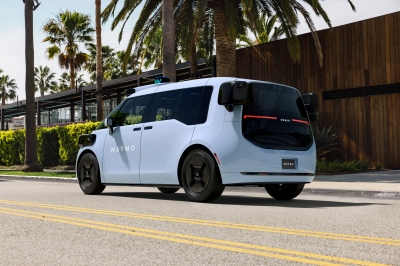Waymo unveiled its 6th-generation autonomous driving system. It is optimized for cost, is being trained faster than previous models, and boasts enhanced weather resilience.
The Alphabet-owned company has been expanding steadily across the US. In March, Waymo exanded its driverless taxi operations in the state of California. Earlier this month, it also secured a cash injection of $5 billion.
Waymo’s 6th-gen driver
According to Waymo vice president of engineering, Satish Jeyachandran, the 6th-gen system is built on everything that made the previous generation work – a system that played a huge part in scaling the company’s services to some of the densest cities in the US.
The new model has 13 cameras, four LiDAR (light detection and ranging) sensors, six radar sensors and several external audio receivers (EARs). Jeyachandran says it “is optimized for greater performance at a significantly reduced cost, without compromising safety.”
The sixth-gen model also provides the Waymo Driver with “overlapping fields of view, all around the vehicle, up to 500 meters away, day and night, and in a range of weather conditions.”
Waymo’s weather resilience
Even though the current system already provides safe service in extreme weather conditions, the newer systems includes built-in margin in sensor capabilities to ensure reliable performance even in adverse conditions.
Jeyachandran explains: “Since our vehicles are exposed to the elements for long periods without manual intervention, we implemented preventive measures for each sensor to maintain a clear view of its surroundings whether it’s driving through a buggy Texas road or operating in freezing temperatures.”
ALSO READ: Waymo’s next stop: San Francisco Airport?
Coming to more riders, faster
The sixth-gen model is already integrated into thousands of vehicles, backed by a series of “rigorous regimen of structured tests, real-world driving, and simulation” to boost performance.
“Our 6th-generation sensor suite already has thousands of miles of real-world driving experience under its wheels,” says Jeyachandran, along with millions of miles more in simulation tests.
The system continues to learn from the collective experiences gathered across the Waymo fleet, including previous hardware generations. “This shared knowledge drastically reduces the miles needed to train and validate the underlying foundation models that autonomously drive our vehicles,” says Jeyachandran.
Waymo continues to actively engages with researchers and analysts to improve the simulators, in turn enabling the AVs to solve challenges. These challenges serve as benchmarks to gauge the industry’s progress in solving critical problems.
Image credit: Waymo
About the author
Cheryl has contributed to various international publications, with a fervor for data and technology. She explores the intersection of emerging tech trends with logistics, focusing on how digital innovations are reshaping industries on a global scale. When she's not dissecting the latest developments in AI-driven innovation and digital solutions, Cheryl can be found gaming, kickboxing, or navigating the novel niches of consumer gadgetry.













